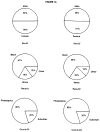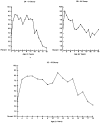EPSDT impact on health status
Abstract
Early and Periodic Screening, Diagnosis and Treatment (EPSDT), a large-scale operational screening program which has generated a tremendous volume of data on the sociodemographic characteristics and health status of Medicaid-eligible children, seems to provide an ideal context within which to evaluate the effectiveness of preventive child health care. Concerns about health care expenditures generally, and the effectiveness of preventive child health services specifically, lead to the question of whether the impact on the health status of the children served can be measured without significantly adding to the cost of these services with primary data collection. We employed a quasi-experimental research design using administratively-generated data from an operational EPSDT program to estimate program impact on the prevalence of serious abnormalities among the children served. We found that, compared either to themselves across time or to a control group, a representative sample of 1831 children had almost 30 percent fewer abnormalities requiring care on rescreening. The ability to demonstrate the impact of EPSDT using these data suggests, among other things relevant to policy, that a national EPSDT monitoring system could be developed that would be cost-effective and could lead to program improvement.
Figures
References
-
- Campbell DT, Stanley JC. Experimental and Quasi-Experimental Designs for Research. Chicago: Rand-McNally; 1963.
-
- Clearinghouse on Corporate Social Responsibility, American Council of Life Insurance and the Health Insurance Association of America. Fact Sheet Lifecycle Preventive Health Study. Washington, D.C.: Jul, 1980.
-
- Consumers Union. Those Costly Annual Physicals: Are they Really Worthwhile? Consumer Reports. 1980 Oct;45:601–607.
-
- Cook TD, Campbell DT. Quasi-Experimental: Design and Analysis Issues for Field Settings. Chicago: Rand-McNally; 1979.
-
- Eisenberg L. The Perils of Prevention, A Cautionary Note. New England Journal of Medicine. 1977 Dec;297(22):1230–1232. - PubMed
Publication types
MeSH terms
Grants and funding
LinkOut - more resources
Full Text Sources
Medical


